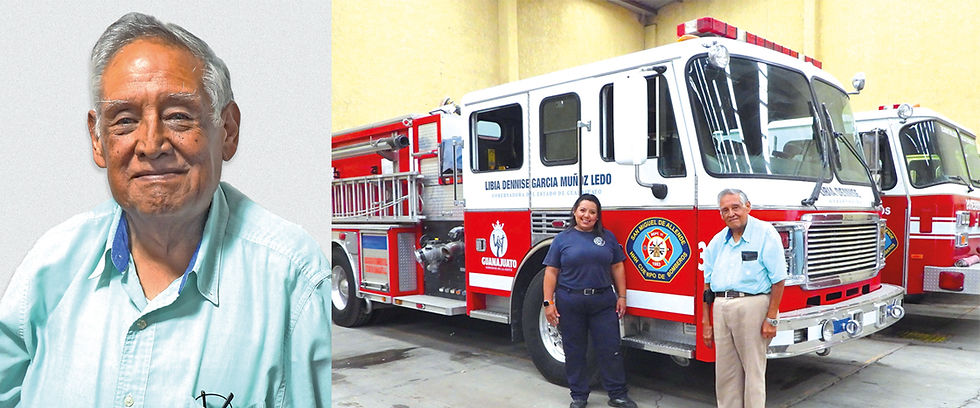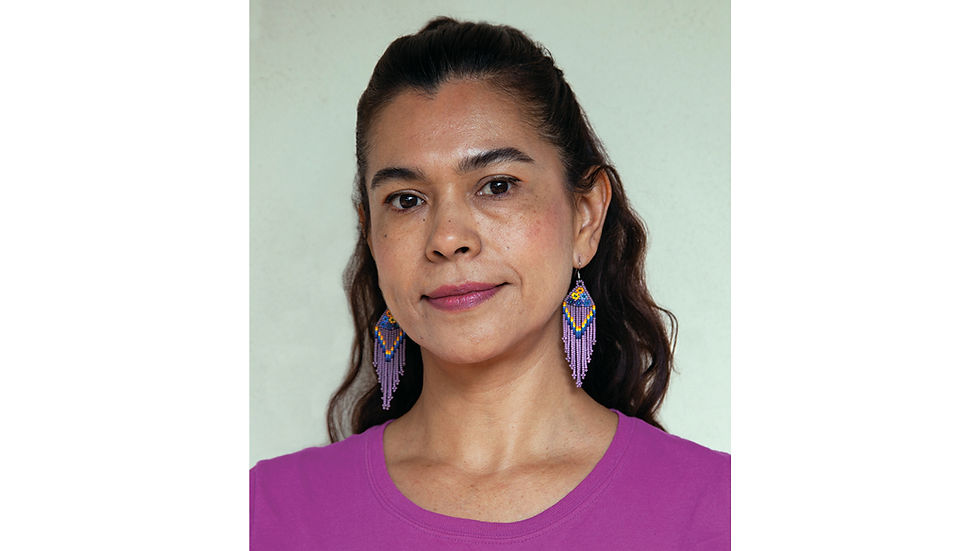The Language Of Abstraction: In Conversation With Gene Johnson
- camieinmx
- hace 1 día
- 3 Min. de lectura

By Pascual Hijuelos
Abstraction is a language. It is a form of expression which is developed over many years by an artist regardless of the discipline. You must learn to walk before you can run. Picasso, Mondrian and Krasner to mention a few were great draftspersons. They had chops. It took them years to become abstractionists. Gene Johnson, a longtime resident of San Miguel, who is affiliated with Caldwell Snyder Gallery in San Francisco and ACA in New York, is well versed in representational art as well as the intricacies of abstraction. As an abstractionist, his work leans toward a more minimalist format. Minimalism is an art movement that emerged in the 1960s, characterized by its extreme simplicity. It challenges traditional notions of art, often reducing artworks to basic elements, such as shapes, colors and materials. Gene Johnson, using simple geometric shapes and alluring but dominant colors, creates works which are complicated and spiritual at the same time; works that transport you into his unique world. Recently at lunch we spoke.
How did it all start? Art has always been a part of my life. Growing up with a mother who was both a sculptor and an art teacher, I was constantly surrounded by creativity. I would spend hours watching her hands bring sculptures to life, turning ideas into tangible forms. But it wasn’t just her work that fascinated me—it was everything artistic. From the graphic designs on grocery store labels to the shapes and patterns I saw around me, I was captivated by it all. It became clear that my path was meant to be in the arts. I attended a traditional art school in Florida, where I studied both fine arts and design. After graduating, I moved to New York, eager to dive into its vibrant art scene. My first job was as a junior package designer, where I learned invaluable design and production skills. But soon, I found that detailed production work didn’t satisfy my creative aspirations. So, I shifted gears and entered the fast-paced world of advertising. The challenges of tight deadlines, client relationships, and conceptual design were thrilling. And all the while, I continued to paint. Eventually, I chose to leave advertising behind and focus solely on fine art. I returned to Florida to teach at my alma mater and fully immerse myself in painting. It was during this time that I met Jimmy Ernst—one of the original New York Abstract Expressionists and the son of Max Ernst—whose mentorship altered the trajectory of my life. With his encouragement, I moved back to New York, found a loft in SoHo, and the world of abstraction truly began to unfold for me.
You were classically trained. What made you change to abstraction? My early work was very classic—still lifes, landscapes, and figurative art. But over time, I felt something was missing. I began introducing surreal elements and a personal narrative into my work. I felt the need to simplify. The narrative became less overt, replaced by graphic forms that communicated emotion and story without relying on recognizable figures. My art evolved into an exploration of geometric shapes to be used as metaphors for the delicate balance we experience in life, nature, and politics. These forms gave me the freedom to experiment with color, texture, and shape, while still maintaining a connection to the poetic and conceptual nature of my work.
You’ve exhibited in various countries besides the USA and México—Japan, Brazil, France. Could you share more about that experience? Over the years, my art has taken me to places I never anticipated. These experiences have profoundly shaped my work and allowed me to connect with a broader community of artists. Living in places like México City, São Paulo, and even smaller towns like Pátzcuaro and San Miguel, I’ve gained fresh perspectives on both life and art.
How has your art changed over the years, and what does the future hold? Over the years, my art has evolved, but at its core, it still remains about balance—whether within the composition itself or in the broader balance we seek in the world around us. Looking ahead, I remain excited and curious where my art may continue to evolve.
Gene Johnson will present a solo exhibition at the Grenning Galleryin the Hamptons on August 9th, 2025. See his work at genejohnsonart.com
Cuban-American Pascual Hijuelos divides his time between San Miguel de Allende and New York City. pascualhijuelos.art









Comments